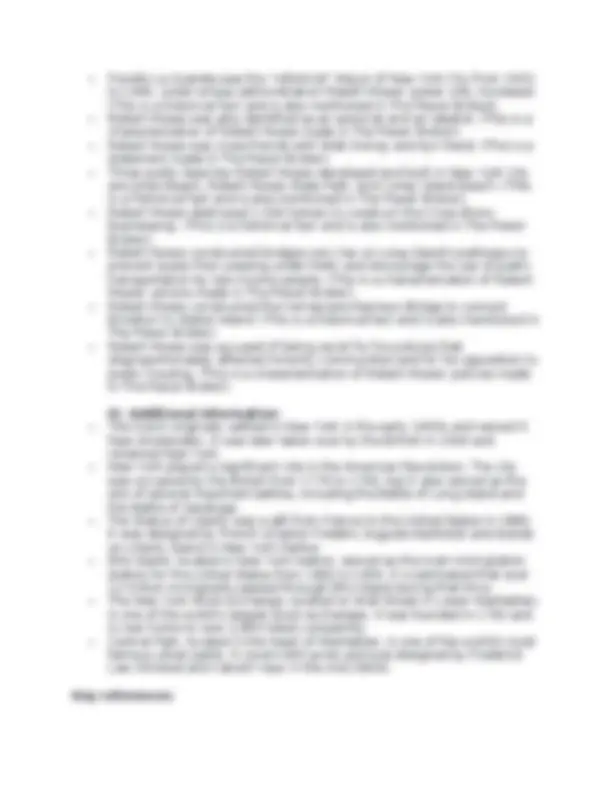




Study with the several resources on Docsity

Earn points by helping other students or get them with a premium plan


Prepare for your exams
Study with the several resources on Docsity

Earn points to download
Earn points by helping other students or get them with a premium plan
Community
Ask the community for help and clear up your study doubts
Discover the best universities in your country according to Docsity users
Free resources
Download our free guides on studying techniques, anxiety management strategies, and thesis advice from Docsity tutors
Information on two different topics related to the history of New York City. The first part of the document summarizes the Homberger text, which is a collection of documents that sheds light on the history of Jewish families in colonial New York City. The second part of the document summarizes Chapter Three of the book The Power Broker: Robert Moses and the Fall of New York by Robert Caro, which provides information on the life and work of Robert Moses, a prominent figure in the development of New York City in the 20th century.
Typology: Lecture notes
1 / 4

This page cannot be seen from the preview
Don't miss anything!



Homberger text: British New York 1664 - Study Guide Number Three: Chapter Three I. Homberger text: British New York 1664 -1783:
Detailed explanation: My research led me to look for any source that would accurately provide me with the following answers you require. I found that The Homberger text you are referring to is likely "The Homberger Manuscripts: A Study of Seventeenth-Century Life in New York City" by Dorothy C. Barck. This book is a collection of letters and documents from the Homberger family, a prominent Jewish family in colonial New York City. While the Homberger text itself does not have a direct connection to Moses, it provides valuable insights into the social and cultural history of colonial New York City, including the experiences of Jewish families like the Hombergers during this period. In summary, the Homberger text is a collection of documents that sheds light on the history of Jewish families in colonial New York City and does not have a direct connection to Moses or the Jewish religious tradition. Here are the explanations for the answers: I. Homberger text: British New York 1664-1783: New York was named after the Duke of York, who later became King James II. The name change took effect in 1664. (This is a historical fact and is widely accepted). Jacob Leisler was a German-American colonist who led a rebellion against the colonial government of New York in 1689-1691. (This is a historical fact). Lord Cornbury was a British colonial governor of New York and New Jersey who was accused of cross-dressing and other scandalous behavior during his time in office. (This is a historical fact). True. (It is not clear what statement this refers to). Washington Heights. (It is not clear what question this refers to). True. (It is not clear what statement this refers to). Fraunces Tavern. (This is a historical fact). Broadway, in 1708. (This is a historical fact). Richard Nicolls was a British military officer who served as the first colonial governor of New York from 1664 to 1668. (This is a historical fact). Thomas Dongan's Charter granted greater political autonomy to the Province of New York and established the counties of New York, Kings, Queens, and Richmond. (This is a historical fact). II. Moses text: Chapter Three: The Building Machine: At the height of his power, Robert Moses had over 150,000 people working for him in New York. (This is a statement made in the book The Power Broker: Robert Moses and the Fall of New York by Robert Caro, on which this chapter is based). Robert Moses had his main office on Randall's Island, where he often had lavish working dinners with his staff and developers. (This is a statement made in the book The Power Broker).
I. Homberger text: Homberger, Eric. "British New York 1664-1783." In The Historical Atlas of New York City: A Visual Celebration of 400 Years of New York City's History, edited by Eric Homberger, 28-31. Berkeley, CA: the University of California Press, 2005. II. Moses text: Moses, Robert. The Power Broker: Robert Moses and the Fall of New York. New York: Vintage Books, 1975.